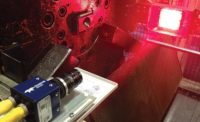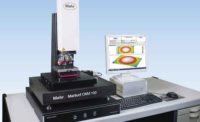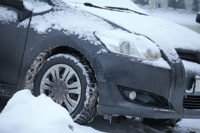Environmental simulation is a critical part of the armory of product designers and manufacturers, ensuring that end-uses are viable in a whole host of complex and niche situations. In mature industries, a focus of environmental simulation testing is on pushing products and materials to ever greater resilience by upgrading and expanding measurement for more extreme ranges, increasing the resilience of products. Conversely, the development of new products, or the use of existing products in new environments, requires more complex solutions to questions in design and manufacture. As the popular consumer handheld devices become more prevalent, this technology becomes far more desirable for industrial applications, for example in aerospace or military usage.
Naturally, those products require a return to first principles: does the original design of this product preclude its use in certain environments, simply due to limitations inherent in the design of the product? All of these pressures underline the dynamism of the market demands for environmental simulation, as well as highlighting the importance of holistic approaches to testing, validation and certification.
Tech Tips
|
There is an array of different types of environmental simulation, from shock and vibration to extreme hot and cold temperatures. As mentioned, the applications for these span a whole host of industries, from automotive to aerospace. The provision for environmental simulation testing again is stratified: in-house testing is conducted at original equipment manufacturers (OEMs), while independent testing partners deliver testing and qualification where required. The complex relationship between manufacturers and testing companies highlights the nature of this field, with environmental simulation able to support not simply the certification of end products, but really flag up potential problems much earlier in the process, for example in early stages of design. Highly accelerated life testing (HALT) is one such methodology, with environmental tests a core part of the process.
TESTING PARTNERSHIPS
Testing of individual components allows companies to qualify individual parts for use, but environmental simulation does not just cover usage. Shipment tests are required across all kinds of sectors and industries, to measure the effects on products all through the supply chain. This is paramount for a range of reasons. As smaller manufacturers look to expand, they may require new methods of shipping so anticipating the environmental conditions and ensuring that their product meets the necessary requirements is crucial. Different shipping methods will occur at a variety of different temperatures and pressures, which should be accounted for.
The sheer range of applications for environmental simulation ensures that advances are being made in different industries and sectors. As mentioned previously, the aerospace sector is very mature, so the types of environmental simulation are becoming more and more sophisticated. And as new types of products are approved for use in aircraft, from tablets to other computing devices, the testing and qualification of these products must follow accordingly.
Environmental simulation therefore plays a critical role in shaping the designs of products, the shipment and supply chain implications for products, as well as their ultimate use and the conditions under which they are safe and can function. Ultimately, the applications of these types of testing methodologies really are diverse, and shaping new industries all the time.
AEROSPACE ENVIRONMENTAL TESTING
Testing in the aerospace sector is driven by the critical demands of safety, reliable operation and resilience. Lightning strikes present risks to the latest generation of electronic products and components that are needed to keep the aircraft in the air. Similarly, on landing and take-off, aircraft are exposed to assorted pressures, temperatures, shocks and vibrations that again push products to the limits of their resilience and operational performance.
It is the combination of these factors which can pose serious problems for aircraft, so the development of increasingly complex dynamic and climatic capabilities ensures products can withstand any and all conditions. Experts work with equipment which can simulate these conditions as required by manufacturers.
In order to put these products through their paces, one particular type of equipment is the electrodynamic shaker, which is designed to accurately simulate the vibrations and shocks that the product will see in the real world according to the parameters set by the applicable test standards. Simulation according to these standards can determine the reliability and predict the behavior of the product according to the specified conditions with displacement of up to a three-inch stroke capability. The ability to simulate, for example, a tire burst from an aircraft which is landing at speeds of between 150kmh-200kmh requires the accurate simulation of displacement and frequency on vibration systems to determine the test article’s ability to stay functional under those extreme conditions.
As with all testing approved by regulatory bodies, such as the FAA, testing is rigorous because it can replicate this environmental condition. The aerospace industry needs to see how the products that make up the expensive and extremely important cockpit control systems react under these conditions. Crucially, not all will be able to withstand this. But as we have highlighted, the value of environmental simulation allows you to record the behavior of products and predict future functionality given specific parameters.
SHIPMENT TESTING
Environmental simulation applications within aerospace testing give Primes and OEMs the ability to test and certify products in different conditions in use. However, environmental simulation is not limited to this. Rather, the various methodologies available are increasingly used throughout the supply chain of the manufacture of a given product, right down to the shipping or delivery of the product which is as crucial as any other aspect of the supply chain.
Environmental simulation of packaging is again a diffuse area of testing. From small box testing to increasingly larger pallet volumes, with the attendant increases in weight and dimensions, each of these structures require the same level of testing as the complex machinery inside the products.
Products shipping via aircraft will naturally be affected by the diverse range of temperatures, humidities and vibrations expected. Moreover, key considerations are made to the length of these processes and are dictated dependent upon the shipping method (truck, train, aircraft, ship, etc.); for example, long-term cold through to high speed and friction, not to mention corrosion and related processes. Therefore, the general reliability of a product may not need to exceed very small parameters, but if it cannot be shipped via conditions associated with long-haul flights, for example, the manufacture and distribution of the product itself may be hindered.
This is why environmental simulation remains at the forefront of the minds of manufacturers, right at the start of the design and manufacture process. Testing expertise in this area should therefore not be limited to the equipment and capability of testing at large parameter sizes. Real guidance needs to provided, to direct the resilience of the product in any and all required conditions.
HANDHELD DEVICES AND NEW TECHNOLOGIES
The increase in handheld devices and their steady application in new industries has created different avenues for environmental simulation and related testing methods. To accurately simulate the conditions of use over the life of a particular product is a difficult process, particularly in consumer products which are used in a multitude of different conditions which are less controlled and therefore more difficult to predict. For example, ingress protection is in increasing demand for use with new products from GPS to wrist watches and similar products. Consumer use of these products naturally requires less comprehensive testing than for military uses for example, but the overall principles associated remain the same and can cover variables such as aging, corrosion, humidity, UV and mechanical.
As we have seen, environmental testing delivers significant different benefits in the design and manufacture of products, not simply in the certification for use. As new technological applications find their way into new industry markets, these testing methods will continue to support manufacturers and end-users with reliable and resilient products. Q








